Taking your dog to work: everything you need to know
Why take your dog to work?

If you’re able to, taking your dog to work is a great way for your colleague and teams to get to meet your significant, waggy other. It can also bring benefits such as:
- dogs in the workplace can make people happier by bringing down stress levels
- taking your dog to work will stimulate them mentally and can help build confidence in new environments
However, there are a few things to consider before you and your four-legged friend set off for work.
Preparing to take your dog to work
Make sure that your dog has been to the loo before you set off and scope out an appropriate place at work that you can take them for regular comfort breaks during the day. Outdoor green spaces are ideal as they can have a good sniff around, too. Also, what are you going to do with that poo bag? Best to find out before you get to work! In short, you don’t want any accidents in the office during the day and you want to make sure your dog is as comfortable as possible.
What to pack when you take your dog to work
Take your dog’s bed to work with you as having a nice comfy space that smells of home will be reassuring and relaxing. It will also give them an opportunity to take a well-deserved snooze; they’ll need time to process things during the day. Position it near to you but out of the way of constant footfall – your dog won’t get much snoozing done if they’re right next to the recycling bin!
Take some toys or chews with you to keep your dog’s mind occupied during the day so they don’t try and find their own entertainment elsewhere. You could also prepare a Kong for them by soaking some kibble in water, stuffing and then freezing it. Giving it to your dog frozen will make it last longer and provide mental stimulation.
How will my dog find it?
Don’t expect too much of your dog. Meeting new people in a new place can be challenging for even the most robust dogs and you want this to be a positive experience for them. Allow them the time to take in the sights and sounds of your workplace but keep everything as calm and relaxed as you can by reassuring them verbally as they explore.
Workspaces are quite different now to how they were in pre-Covid. Things like hand sanitiser stations and face masks will be a regular feature for the time being. A dripping, wall-mounted hand sanitiser station isn’t ideal, so check that your dog can’t get too close and make sure that you and your colleagues don’t have any face masks hanging off desks or chairs – they look quite like socks to a curious dog!
Even if your dog’s been into the office lots of times with you before, if you’ve been working at home a lot over the last year, it might take some time for your dog to get accustomed again. Take some time to re-introduce your dog to the office; maybe the layout has changed post-Covid, with more pods or break-out areas. If so, ensure your dog has time to investigate and find a place where they can settle and feel comfortable. If you’re going into a meeting, work out what’s best for your dog because they may feel a little anxious without you. You could take their bed into the meeting room so they can settle while you have your meeting.
And while we’re on the subject of humans, while your dogs’ welfare is paramount, it’s also super-important to consider the humans you work with too.
How to introduce your dog to your colleagues
You could prepare a fun introduction about your dog that you can give to colleagues in advance, maybe a card, a sheet, an email or a short video! Name, breed, likes and dislikes can all help prepare people for the dog that they’re about to meet. For example, not all dogs like their heads or ears touched but do love a scratch under the chin so knowing this in advance will help your workmates get it right for your dog from the start.
Your dog might love jumping up and licking you but your colleagues might find it a bit frightening … or just plain annoying. Take the time to talk to people beforehand and gauge their confidence and preferences around dogs before introducing your dog to them.
Ask your dog to sit when greeting people and you could even hand out small pots of doggy rewards to give to colleagues to help promote polite greetings. But don’t forget to reduce the amount of food you give your dog that day to take this into account.
Think about the food rewards you’re bringing in for your dog. Your dog might love fish-flavoured snacks but your colleagues might not be so enthusiastic as they can be a bit whiffy!
Don’t be surprised if your dog is tired and sleepy when you get home. All that interaction will be tiring for them and they’ll have lots of lovely memories to process and dream about.
Help support our life-changing work...
Imagine if everyday tasks were so challenging or physically demanding they affected your quality of life. For many people living with a disability of families with a child with autism, that is their reality. Now imagine if a specially trained four-legged friend could restore your, or your family’s, independence.
The demand for our services is high and we can’t help as many people as we would like to without more funding. Please help us continue making life-changing differences for people with disabilities through the power of expertly trained dogs.
Every contribution, whatever size, is important and helps us make a difference.

